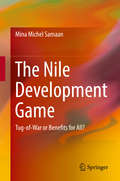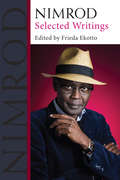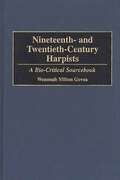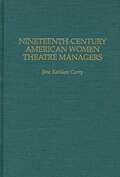- Table View
- List View
Nightmares in the Dream Sanctuary: War and the Animated Film
by Donna KornhaberIn 2008, Waltz with Bashir shocked the world by presenting a bracing story of war in what seemed like the most unlikely of formats—an animated film. Yet as Donna Kornhaber shows in this pioneering new book, the relationship between animation and war is actually as old as film itself. The world’s very first animated movie was made to solicit donations for the Second Boer War, and even Walt Disney sent his earliest creations off to fight on gruesome animated battlefields drawn from his First World War experience. As Kornhaber strikingly demonstrates, the tradition of wartime animation, long ignored by scholars and film buffs alike, is one of the world’s richest archives of wartime memory and witness. Generation after generation, artists have turned to this most fantastical of mediums to capture real-life horrors they can express in no other way. From Chinese animators depicting the Japanese invasion of Shanghai to Bosnian animators portraying the siege of Sarajevo, from African animators documenting ethnic cleansing to South American animators reflecting on torture and civil war, from Vietnam-era protest films to the films of the French Resistance, from firsthand memories of Hiroshima to the haunting work of Holocaust survivors, the animated medium has for more than a century served as a visual repository for some of the darkest chapters in human history. It is a tradition that continues even to this day, in animated shorts made by Russian dissidents decrying the fighting in Ukraine, American soldiers returning from Iraq, or Middle Eastern artists commenting on the Israeli-Palestinian conflict, the Arab Spring, or the ongoing crisis in Yemen. Nightmares in the Dream Sanctuary: War and the Animated Film vividly tells the story of these works and many others, covering the full history of animated film and spanning the entire globe. A rich, serious, and deeply felt work of groundbreaking media history, it is also an emotional testament to the power of art to capture the endurance of the human spirit in the face of atrocity.
Nightmares in the Dream Sanctuary: War and the Animated Film
by Donna KornhaberIn 2008, Waltz with Bashir shocked the world by presenting a bracing story of war in what seemed like the most unlikely of formats—an animated film. Yet as Donna Kornhaber shows in this pioneering new book, the relationship between animation and war is actually as old as film itself. The world’s very first animated movie was made to solicit donations for the Second Boer War, and even Walt Disney sent his earliest creations off to fight on gruesome animated battlefields drawn from his First World War experience. As Kornhaber strikingly demonstrates, the tradition of wartime animation, long ignored by scholars and film buffs alike, is one of the world’s richest archives of wartime memory and witness. Generation after generation, artists have turned to this most fantastical of mediums to capture real-life horrors they can express in no other way. From Chinese animators depicting the Japanese invasion of Shanghai to Bosnian animators portraying the siege of Sarajevo, from African animators documenting ethnic cleansing to South American animators reflecting on torture and civil war, from Vietnam-era protest films to the films of the French Resistance, from firsthand memories of Hiroshima to the haunting work of Holocaust survivors, the animated medium has for more than a century served as a visual repository for some of the darkest chapters in human history. It is a tradition that continues even to this day, in animated shorts made by Russian dissidents decrying the fighting in Ukraine, American soldiers returning from Iraq, or Middle Eastern artists commenting on the Israeli-Palestinian conflict, the Arab Spring, or the ongoing crisis in Yemen. Nightmares in the Dream Sanctuary: War and the Animated Film vividly tells the story of these works and many others, covering the full history of animated film and spanning the entire globe. A rich, serious, and deeply felt work of groundbreaking media history, it is also an emotional testament to the power of art to capture the endurance of the human spirit in the face of atrocity.
Nights Out: Life in Cosmopolitan London
by Judith WalkowitzLondon’s Soho district underwent a spectacular transformation between the late Victorian era and the end of the Second World War: its fin-de-siècle buildings and dark streets infamous for sex, crime, political disloyalty, and ethnic diversity became a center of culinary and cultural tourism servicing patrons of nearby shops and theaters. Indulgences for the privileged and the upwardly mobile edged a dangerous, transgressive space imagined to be "outside" the nation.Treating Soho as exceptional, but also representative of London's urban transformation, Judith Walkowitz shows how the area's foreignness, liminality, and porousness were key to the explosion of culture and development of modernity in the first half of the twentieth century. She draws on a vast and unusual range of sources to stitch together a rich patchwork quilt of vivid stories and unforgettable characters, revealing how Soho became a showcase for a new cosmopolitan identity.
Nighttime Breastfeeding: An American Cultural Dilemma (Fertility, Reproduction and Sexuality: Social and Cultural Perspectives #26)
by Cecília TomoriNighttime for many new parents in the United States is fraught with the intense challenges of learning to breastfeed and helping their babies sleep so they can get rest themselves. Through careful ethnographic study of the dilemmas raised by nighttime breastfeeding, and their examination in the context of anthropological, historical, and feminist studies, this volume unravels the cultural tensions that underlie these difficulties. As parents negotiate these dilemmas, they not only confront conflicting medical guidelines about breastfeeding and solitary infant sleep, but also larger questions about cultural and moral expectations for children and parents, and their relationship with one another.
Nightwork: Sexuality, Pleasure, and Corporate Masculinity in a Tokyo Hostess Club
by Anne AllisonIn Nightwork, Anne Allison opens a window onto Japanese corporate culture and gender identities. Allison performed the ritualized tasks of a hostess in one of Tokyo's many "hostess clubs": pouring drinks, lighting cigarettes, and making flattering or titillating conversation with the businessmen who came there on company expense accounts. Her book critically examines how such establishments create bonds among white-collar men and forge a masculine identity that suits the needs of their corporations. Allison describes in detail a typical company outing to such a club—what the men do, how they interact with the hostesses, the role the hostess is expected to play, and the extent to which all of this involves "play" rather than "work." Unlike previous books on Japanese nightlife, Allison's ethnography of one specific hostess club (here referred to as Bijo) views the general phenomenon from the eyes of a woman, hostess, and feminist anthropologist. Observing that clubs like Bijo further a kind of masculinity dependent on the gestures and labors of women, Allison seeks to uncover connections between such behavior and other social, economic, sexual, and gendered relations. She argues that Japanese corporate nightlife enables and institutionalizes a particular form of ritualized male dominance: in paying for this entertainment, Japanese corporations not only give their male workers a self-image as phallic man, but also develop relationships to work that are unconditional and unbreakable. This is a book that will appeal to anyone interested in gender roles or in contemporary Japanese society.
Nihilism and Negritude: Ways Of Living In Africa
by Célestin MongaIn a searching meditation on ways of living in modern Africa, Célestin Monga dispels the stereotypes that cloud how outsiders view the continent, and how Africans sometimes view themselves. He shows how dance, music, bodily experience, faith, and mourning reflect a nihilism that finds meaning and joy in a life that would otherwise seem absurd.
Nihilism and Negritude: Ways Of Living In Africa
by Célestin MongaIn a searching meditation on ways of living in modern Africa, Célestin Monga dispels the stereotypes that cloud how outsiders view the continent, and how Africans sometimes view themselves. He shows how dance, music, bodily experience, faith, and mourning reflect a nihilism that finds meaning and joy in a life that would otherwise seem absurd.
Nihilism and Negritude: Ways of Living in Africa
by Célestin MongaThere are two common ways of writing about Africa, says Célestin Monga. One way blames Africa’s ills on the continent’s history of exploitation and oppression. The other way blames Africans themselves for failing to rise above poisonous national prejudices and resentments. But patronizing caricatures that reduce Africans to either victims or slackers do not get us very far in understanding the complexities and paradoxes of Africa today.A searching, often searing, meditation on ways of living in modern Africa, Nihilism and Negritude dispels the stereotypes that cloud how outsiders view the continent—and how Africans sometimes view themselves. In the role of a traveler-philosopher, Monga seeks to register “the picturesque absurdity of daily life” in his native Cameroon and across the continent. Whether navigating the chaotic choreography of street traffic or discoursing on the philosophy of café menus, he illuminates the patterns of reasoning behind everyday behaviors and offers new interpretations of what some observers have misunderstood as Africans’ resigned acceptance of suffering and violence.Monga does not wish to revive Negritude, the once-influential movement that sought to identify and celebrate allegedly unique African values. Rather, he seeks to show how daily life and thought—witnessed in dance and music, sensual pleasure and bodily experience, faith and mourning—reflect a form of nihilism developed to cope with chaos, poverty, and oppression. This is not the nihilism of despair, Monga insists, but the determination to find meaning and even joy in a life that would otherwise seem absurd.
Nihilism and Negritude: Ways of Living in Africa
by Célestin MongaThere are two common ways of writing about Africa, says Célestin Monga. One way blames Africa’s ills on the continent’s history of exploitation and oppression. The other way blames Africans themselves for failing to rise above poisonous national prejudices and resentments. But patronizing caricatures that reduce Africans to either victims or slackers do not get us very far in understanding the complexities and paradoxes of Africa today.A searching, often searing, meditation on ways of living in modern Africa, Nihilism and Negritude dispels the stereotypes that cloud how outsiders view the continent—and how Africans sometimes view themselves. In the role of a traveler-philosopher, Monga seeks to register “the picturesque absurdity of daily life” in his native Cameroon and across the continent. Whether navigating the chaotic choreography of street traffic or discoursing on the philosophy of café menus, he illuminates the patterns of reasoning behind everyday behaviors and offers new interpretations of what some observers have misunderstood as Africans’ resigned acceptance of suffering and violence.Monga does not wish to revive Negritude, the once-influential movement that sought to identify and celebrate allegedly unique African values. Rather, he seeks to show how daily life and thought—witnessed in dance and music, sensual pleasure and bodily experience, faith and mourning—reflect a form of nihilism developed to cope with chaos, poverty, and oppression. This is not the nihilism of despair, Monga insists, but the determination to find meaning and even joy in a life that would otherwise seem absurd.
Nihilist Order: The Intellectual Roots of Totalitarianism
by Professor David OhanaThe explosive combination of nihilist leanings together with a craving for totalitarianism was an ideal of philosophers, cultural critics, political theorists, engineers, architects and aesthetes long before it materialised in flesh and blood, not only in technology, but also in fascism, Nazism, bolshevism and radical European political movements. "The Nihilist Order", originally published in three hardcover volumes and now published in a consolidated paperback edition with an encompassing new Introduction, inspired excellent review endorsements, both amongst the academic and public spheres -- and has been heralded as a great achievement in European intellectual and cultural history.
Niklas Luhmann — beobachtet: Eine Einführung in die Systemtheorie
by Peter FuchsSystemtheorie ist sehr abstrakt, labyrinthisch verfasst und so geartet, dass Leser/innen u. a. eine umfassende (nicht nur soziologische) Vorbildung haben müssen, um sie zu verstehen. Der Autor versucht, in diese 'widerborstige' Theorie einzuführen, ohne ihr Niveau fahrlässig zu unterschreiten. Dabei wird ein Trick benutzt: Die Theorie wird in einer Simulation von Kommunikation (von der sie ja handelt) entfaltet. Der Text realisiert, wovon er spricht, er ist sein eigenes Beispiel und darin tautologisch. Und weil er sich an Kommunikationen entwickelt, an denen sehr verschiedene Personen beteiligt sind, unterläuft er die Gefahr des Dogmatismus und verwirklicht - versuchsweise - ein Stück Wissenschaftsliteratur, das mit dem belehrenden Einführungscharakter ein spielerisches Moment verbindet, was wohl heißt: Offenheit für mögliche Anschlüsse.
Niklas Luhmann - beobachtet: Eine Einführung in die Systemtheorie
by Peter FuchsSystemtheorie, insbesondere diejenige Spielart, die Niklas Luhmann entwickelt hat, ist sehr abstrakt, labyrinthisch verfaßt und so geartet, daß Leser/innen u. a. eine umfassende (leider nicht nur soziologische) Vorbildung haben müssen, um sie zu verstehen.Der Autor versucht, in diese 'widerborstige' Theorie einzuführen, ohne ihr Niveau fahrlässig zu unterschreiten. Dabei wird ein Trick benutzt: Die Theorie wird in einer Simulation von Kommunikation (von der sie ja handelt) entfaltet. Der Text realisiert, wovon er spricht, er ist sein eigenes Beispiel und darin tautologisch. Und weil er sich an Kommunikationen entwickelt, an denen sehr verschiedene Personen beteiligt sind, unterläuft er die Gefahr des Dogmatismus und verwirklicht - versuchsweise - ein Stück Wissenschaftsliteratur, das mit dem belehrenden Einführungscharakter ein spielerisches Moment verbindet, was wohl heißt: Offenheit für mögliche Anschlüsse.
The Nile Development Game: Tug-of-War or Benefits for All?
by Mina Michel SamaanThis book introduces an analytic framework constructed upon the iterated Prisoners' Dilemma game to model and analyze transboundary water interactions along the Nile River. It presents a thorough and in-depth analysis of the historical path through which conflict and cooperation have been generated among the Nile riparians over large-scale developmental schemes. This is done through modeling water interactions in the basin as an iterated Prisoners' Dilemma game and employing process-tracing method to compare four distinguishable rounds of the game: the colonial round, the Cold War round, the post-Cold War round, and the post-2011 round. The book examines the influences of the changing political contexts at the domestic, regional, and global levels on the game outcomes. This framework is initially applied on several cases of international rivers worldwide, while the rest of the book is devoted to the Nile case. The book's central argument is that the riparians' interests, capabilities, and beliefs are heterogeneous in varying degrees and that the changing multilevel political contexts influence the level of such heterogeneities among the riparians, which ultimately drive the equilibrium dynamics in the Nile game to generate different conflictive and cooperative outcomes over time. Although the book's main conclusion indicates that the absence of economic interdependence and regional integration will transfer the game into tug-of-war, which will impose harsh punishment on the basin communities and ecosystems on the long term, the final chapter lists a group of recommendations addressed to the riparian states and international donors, exploring the way for boosting cooperation and preventing conflicts in the basin. Presenting clear theoretical, methodological, and policy implications, this book is appropriate for students and scholars of international relations, hydrology, and development studies.
The Nilotes of the Sudan and Uganda: East Central Africa Part IV
by Audrey ButtRoutledge is proud to be re-issuing this landmark series in association with the International African Institute. The series, originally published between 1950 and 1977, collected ethnographic information on the peoples of Africa, using all available sources: archives, memoirs and reports as well as anthropological research which, in 1945, had only just begun. Concise, critical and (for its time) accurate, the Ethnographic Survey contains sections as follows: Physical Environment Linguistic Data Demography History & Traditions of Origin Nomenclature Grouping Cultural Features: Religion, Witchcraft, Birth, Initiation, Burial Social & Political Organization: Kinship, Marriage, Inheritance, Slavery, Land Tenure, Warfare & Justice Economy & Trade Domestic Architecture Each of the 50 volumes will be available to buy individually, and these are organized into regional sub-groups: East Central Africa, North-Eastern Africa, Southern Africa, West Central Africa, Western Africa, and Central Africa Belgian Congo. The volumes are supplemented with maps, available to view on routledge.com or available as a pdf from the publishers.
The Nilotes of the Sudan and Uganda: East Central Africa Part IV
by Audrey ButtRoutledge is proud to be re-issuing this landmark series in association with the International African Institute. The series, originally published between 1950 and 1977, collected ethnographic information on the peoples of Africa, using all available sources: archives, memoirs and reports as well as anthropological research which, in 1945, had only just begun. Concise, critical and (for its time) accurate, the Ethnographic Survey contains sections as follows: Physical Environment Linguistic Data Demography History & Traditions of Origin Nomenclature Grouping Cultural Features: Religion, Witchcraft, Birth, Initiation, Burial Social & Political Organization: Kinship, Marriage, Inheritance, Slavery, Land Tenure, Warfare & Justice Economy & Trade Domestic Architecture Each of the 50 volumes will be available to buy individually, and these are organized into regional sub-groups: East Central Africa, North-Eastern Africa, Southern Africa, West Central Africa, Western Africa, and Central Africa Belgian Congo. The volumes are supplemented with maps, available to view on routledge.com or available as a pdf from the publishers.
Nimrod: Selected Writings (African Perspectives)
by Frieda EkottoThe Chadian writer Nimrod—philosopher, poet, novelist, and essayist—is one of the most dynamic and vital voices in contemporary African literature and thought. Yet little of Nimrod’s writing has been translated into English until now. Introductory material by Frieda Ekotto provides context for Nimrod’s work and demonstrates the urgency of making it available beyond Francophone Africa to a broader global audience. At the heart of this volume are Nimrod’s essays on Léopold Sédar Senghor, a key figure in the literary and aesthetic Négritude movement of the 1930s and president of Senegal from 1945 through 1980. Widely dismissed in recent decades as problematically essentialist, Senghorian Negritude articulated notions of “blackness” as a way of transcending deep divisions across a Black Diaspora under French colonial rule. Nimrod offers a nuanced reading of Senghor, drawing out the full complexities of Senghor’s philosophy and reevaluating how race and colonialism function in a French-speaking space. Also included in this volume are Nimrod’s essays on literature from the 2008 collection, The New French Matter (La nouvelle chose française). Representing his prose fiction is his 2010 work, Rivers’ Gold (L’or des rivières). Also featured are some of Nimrod’s best-loved poems, in both English translation and the original French. The works selected and translated for this volume showcase Nimrod’s versatility, his intellectual liveliness, and his exploration of questions of aesthetics in African literature, philosophy, and linguistics. Nimrod: Selected Writings marks a significant contribution toward engaging a broader audience with one of the vital voices of our time. This book will be essential reading for Anglophone students and scholars of African philosophy, literature, poetry, and critical theory, and will offer a welcome introduction to Nimrod for general readers of contemporary international writing.
Nine Guiding Principles for Women in Higher Education
by Karyn Z. SprolesHighlighting the nine guiding principles to help women succeed in their academic careers.Although there are more women in higher education than ever before—and increasingly in leadership positions—their paths to success are more difficult than those paved for men. Nine Guiding Principles for Women in Higher Education is a concise and accessible resource aimed at helping women faculty succeed in their academic careers. Karyn Z. Sproles offers guidance, humor, and courage to women in higher education, paying particular attention to those with children and women of color. Based on a wide range of scholarship, stories from dozens of women, and Sproles's personal experience from 34 years as a professor, department chair, and dean, Nine Principles offers advice on• facing down impostor syndrome,• avoiding social isolation,• building networks of mentors,• preparing for tenure,• balancing teaching, scholarship, and home life,and more.Practical and visionary, the nine principles guide readers from the beginning of their careers through to leadership roles. Women in academia—including adjuncts, graduate students, and tenure-track professors—will find the tools they need to balance success with the rest of life's demands. Each chapter ends with a quick list of advice for easy reference and suggested reading to explore more on the chapter's topic. Rounding out the book is a workshop section that can be used by individual readers or as a guide for conducting workshops and faculty development programs.
Nine Guiding Principles for Women in Higher Education
by Karyn Z. SprolesHighlighting the nine guiding principles to help women succeed in their academic careers.Although there are more women in higher education than ever before—and increasingly in leadership positions—their paths to success are more difficult than those paved for men. Nine Guiding Principles for Women in Higher Education is a concise and accessible resource aimed at helping women faculty succeed in their academic careers. Karyn Z. Sproles offers guidance, humor, and courage to women in higher education, paying particular attention to those with children and women of color. Based on a wide range of scholarship, stories from dozens of women, and Sproles's personal experience from 34 years as a professor, department chair, and dean, Nine Principles offers advice on• facing down impostor syndrome,• avoiding social isolation,• building networks of mentors,• preparing for tenure,• balancing teaching, scholarship, and home life,and more.Practical and visionary, the nine principles guide readers from the beginning of their careers through to leadership roles. Women in academia—including adjuncts, graduate students, and tenure-track professors—will find the tools they need to balance success with the rest of life's demands. Each chapter ends with a quick list of advice for easy reference and suggested reading to explore more on the chapter's topic. Rounding out the book is a workshop section that can be used by individual readers or as a guide for conducting workshops and faculty development programs.
Nine Irish Lives: The Thinkers, Fighters, and Artists Who Helped Build America
by Mark Bailey&“These are not just nine Irish lives but nine extraordinary lives, their struggles universal, their causes never more important than today. As the saying goes, the best stories belong to those who can tell them. And these are well told, by some of our best storytellers.&” —Timothy Egan, New York Times bestselling author of The Immortal Irishman In this entertaining and timely anthology, nine contemporary Irish Americans present the stories of nine inspiring Irish immigrants whose compassion, creativity, and indefatigable spirit helped shape America. The authors here bring to bear their own life experiences as they reflect on their subjects, in each essay telling a unique and surprisingly intimate story. Rosie O&’Donnell, an adoptive mother of five, writes about Margaret Haughery, the Mother of Orphans. Poet Jill McDonough recounts the story of a particularly brave Civil War soldier, and filmmaker and activist Michael Moore presents the original muckraking journalist, Samuel McClure. Novelist Kathleen Hill reflects on famed New Yorker writer Maeve Brennan, and historian Terry Golway examines the life of pivotal labor leader Mother Jones. In his final written work, activist and politician Tom Hayden explores his own namesake, Thomas Addis Emmet. Nonprofit executive Mark Shriver writes about the priest who founded Boys Town, and celebrated actor Pierce Brosnan—himself a painter in his spare time—writes about silent film director Rex Ingram, also a sculptor. And a pair of Pulitzer Prize–winning journalists, Mary Jordan and Kevin Sullivan, take on the story of Niall O&’Dowd, the news publisher who brokered peace in Northern Ireland. Each of these remarkable stories serves as a reflection—and celebration—of our nation&’s shared values, ever more meaningful as we debate the issue of immigration today. Through the battles they fought, the cases they argued, the words they wrote, and the lives they touched, the nine Irish men and women profiled in these pages left behind something greater than their individual accomplishments—our America.
Nine Lives: Adolescent Masculinities, The Body And Violence
by James MesserschmidtSociologists and criminologists have long known that there is a relationship between masculinity and crime, for gender has been advanced consistently as the strongest predictor of criminal involvement. Nine Lives, written by one of the most respected authorities on the subject of gender and crime, provides a fascinating account of the connection am
Nine Lives: Adolescent Masculinities, The Body And Violence
by James MesserschmidtSociologists and criminologists have long known that there is a relationship between masculinity and crime, for gender has been advanced consistently as the strongest predictor of criminal involvement. Nine Lives, written by one of the most respected authorities on the subject of gender and crime, provides a fascinating account of the connection am
The Nine Lives of Christmas: The perfect festive read for Christmas 2019
by Florence McNicollIN PARTNERSHIP WITH BATTERSEA DOGS AND CATS HOMECan Battersea's loneliest cat find a home in time for Christmas?It's Christmas at Battersea Dogs and Cats Home and Laura is desperate to find a home for Felicia, a spiky, bad-tempered moggy with a heart of gold. Her boyfriend, Rob, can't understand why she's spending so much time at work, but for Laura, the animals aren't just a job - they're her life. She needs a partner who understands that - doesn't she?As the December snow falls, Laura encounters nine people, all of whom need a little love in their lives and find it in new pets. Everyone needs somebody to curl up with at Christmas, and when the handsome Aaron walks in, he takes not just Felicia, but Laura's heart too...A heart-warming tale about loneliness, love, and the importance of furry friends - perfect to snuggle up with this Christmas.
Nine Paths: A Year in the Life of an Indian Village
by Lexi StadlenRevelatory, lyrical and immersive, this is an extraordinary book that takes you deep into these ordinary women's worlds... Their stories are urgent and forcefully articulated - and this book gives us the chance to hear them.On an island at the eastern edge of India, rural, remote and dense with jungle, is a Muslim village. In an ever-shifting landscape of mangroves and rivers, the women here dwell among contradictions, constrictions and change in a place where one's neighbours are often too close for comfort.Nine Paths follows the lives of nine of these women, and their families, over the course of a year - from one monsoon season to another. There are weddings to celebrate and deaths to mourn, difficult marriages to navigate and tragedies to overcome, as we observe the everyday drudgery and unexpected turmoil, and the dreams of something better. Revelatory, lyrical and immersive, this is an extraordinary book that takes you deep into these ordinary women's worlds. Anthropologist Lexi Stadlen spent sixteen months in this village, talking, listening, and getting to know these women, who were willing to share their complicated, fascinating lives. Their stories are urgent and forcefully articulated - and this book gives us the chance to hear them.
Nineteenth- and Twentieth-Century Harpists: A Bio-Critical Sourcebook (Bio-Critical Sourcebooks on Musical Performance)
by Wenonah M. GoveaThe harp is both the oldest and the newest of instruments. It has existed in some form in nearly all cultures since man has made music. The contemporary concert instrument has been known since the mid-19th century. This work is a compendium of the biographies of many notable harpists of the modern era. The biographies make clear how these performers shaped the contrasts in style and technique of harp playing that have developed over the past 150 years, as cultural, social, and psychological forces influenced individual performance. In addition to the biographical information, the A-Z entries include critical reviews, discographies, and selected bibliographies where possible. New material from the former Soviet states is included.
Nineteenth-Century American Women Theatre Managers (Contributions in Women's Studies)
by Jane K. CurryMany women held positions of great responsibility and power in the United States during the 19th century as theatre managers: managing stock companies, owning or leasing theatres, hiring actors and other personnel, selecting plays for production, directing rehearsals, supervising all production details, and promoting their dramatic offerings. Competing in risky business ventures, these women were remarkable for defying societal norms that restricted career opportunities for women. The activities of more than 50 such women are discussed in Nineteenth-Century American Women Theatre Managers, beginning with an account of 15 pioneering women managers who were all managing theatres before 24 December 1853, when Catherine Sinclair, often incorrectly identified as the first woman theatre manager in the United States, opened her theatre in San Francisco.


















